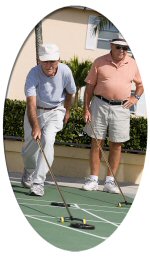


Creating Change >
Social Environment Level: Social Connections
The more, the merrier.
We are social creatures. We like the company of others. Some prefer large gatherings; others enjoy smaller, more intimate groups. Either way, we rely on one another for friendship and support—this is true in many aspects of our lives, including physical activity.
In all of the focus groups, participants commented on the ways that social interactions and relationships influence their involvement in physically activity and contribute to overall well-being.
Encouraging social connections
Physical activity encourages social connections by
- Providing opportunities to socialize
- Providing positive social support as practitioners affirm and encourage an individual’s efforts
- Encouraging people to spend quality time with friends and family
- Creating a sense of belonging and connection to a community
- Providing the opportunity to make new friends, to interact with peers, and to get to know co-workers
- Providing the opportunity to learn new skills from one another
When you hang out with people that have different disabilities, you find out different things; like you go, “Oh, where’d you get that chair?”
Focus group participant with a disability
We come here early enough so that we can get our exercise done and then have our safety meetings. And our safety meetings are just gossip sessions.
Focus group participant with a disability
Feeling socially unconnected
I f a person feels socially unconnected, how might this limit physical activity?
f a person feels socially unconnected, how might this limit physical activity?
- Individuals who feel socially isolated may feel less confident about participating in physical activity and less aware of the programs that are available.
- When family members or friends do not support an individual’s attempts at becoming physically active, it is harder to stay involved.
- Individuals who do not feel welcome in a program are less likely to continue to participate.
- If family and friends are not involved or interested in physical activity, it is more difficult for an individual to be involved.
- When an individual’s social connections change (e.g., kids grow up, friends move away, careers change direction, etc.), the transition can affect social connections and physical activity levels.
Yeah, I used to go skating with my kids and that was always fun. But now my kids have grown and they don’t seem to visit as much anymore.
Aboriginal focus group participant
Isolation
People who are or feel isolated may have difficulty developing social connections. Isolation can be
- Physical (e.g., living on a farm or in an unsafe neighborhood)
- Cultural (e.g., moving to a new country)
- Social (e.g., moving to a new city, children leaving home, elderly friends passing away)
All of these types of isolation have the potential to negatively impact quality of life, mental health, emotional health and, of course, the ability to participate in physical activity. As well, isolation can influence a person’s awareness of physical activity opportunities.
I think also because we are far away from my family, you know, and it’s all so hard, you don’t really have support . . . You need your family like sisters [and] brothers, to support you.
New Canadian focus group participant
Fostering Social Connections: An Ecological Approach
Many focus group participants explained how feeling socially connected or unconnected influenced their ability or willingness to participate in physical activities. To create an environment that fosters social connections, use strategies that incorporate the various levels of an ecological model:
Want to learn more about this topic? Click here for useful online materials.
- The Individual
- The Social Environment
- The Physical Environment
- Policies and Regulations
Strategies for fostering social connections
Quick links in Creating Change sectionIndividual Level Social Environment Level Physical Environment Level
|